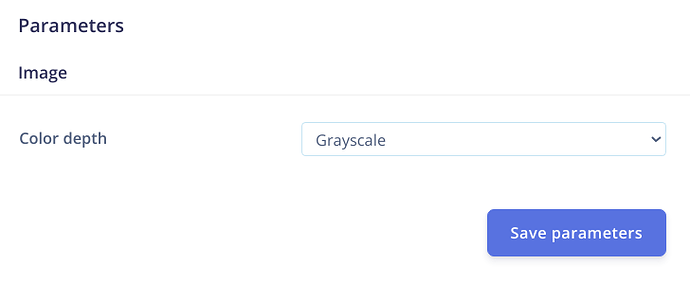#include “esp_camera.h”
#include <WiFi.h>
#include “soc/soc.h”
#include “soc/rtc_cntl_reg.h”
#include “img_converters.h”
#include <HTTPClient.h>
#include “image_util.h”
#include <edge7-project-1_inferencing.h>
//
// WARNING!!! Make sure that you have either selected ESP32 Wrover Module,
// or another board which has PSRAM enabled
//this edit code doesn’t use a gzipped html source code
//the html -code is open and is easy to update or modify on the other tab page = app_httpd.cpp
// Select camera model
//#define CAMERA_MODEL_WROVER_KIT
//#define CAMERA_MODEL_M5STACK_PSRAM
#define CAMERA_MODEL_AI_THINKER
#include “camera_pins.h”
const char* ssid = “FASTWEB-952LR7”;
const char* password = “LXUUATZ6CL”;
int channels = 1;
uint8_t *out_buf;
uint8_t *ei_buf;
static int8_t ei_activate = 0;
ei_impulse_result_t result = {0};
typedef struct
{
size_t size; //number of values used for filtering
size_t index; //current value index
size_t count; //value count
int sum;
int *values; //array to be filled with values
} ra_filter_t;
void setup() {
//WRITE_PERI_REG(RTC_CNTL_BROWN_OUT_REG, 0); //disable brownout detector
Serial.begin(115200);
Serial.setDebugOutput(true);
Serial.println();
camera_config_t config;
config.ledc_channel = LEDC_CHANNEL_0;
config.ledc_timer = LEDC_TIMER_0;
config.pin_d0 = Y2_GPIO_NUM;
config.pin_d1 = Y3_GPIO_NUM;
config.pin_d2 = Y4_GPIO_NUM;
config.pin_d3 = Y5_GPIO_NUM;
config.pin_d4 = Y6_GPIO_NUM;
config.pin_d5 = Y7_GPIO_NUM;
config.pin_d6 = Y8_GPIO_NUM;
config.pin_d7 = Y9_GPIO_NUM;
config.pin_xclk = XCLK_GPIO_NUM;
config.pin_pclk = PCLK_GPIO_NUM;
config.pin_vsync = VSYNC_GPIO_NUM;
config.pin_href = HREF_GPIO_NUM;
config.pin_sscb_sda = SIOD_GPIO_NUM;
config.pin_sscb_scl = SIOC_GPIO_NUM;
config.pin_pwdn = PWDN_GPIO_NUM;
config.pin_reset = RESET_GPIO_NUM;
config.xclk_freq_hz = 20000000;
config.pixel_format = PIXFORMAT_GRAYSCALE;
//init with high specs to pre-allocate larger buffers
if(psramFound()){
config.frame_size = FRAMESIZE_240X240;
config.jpeg_quality = 10;
config.fb_count = 2;
} else {
config.frame_size = FRAMESIZE_240X240;
config.jpeg_quality = 12;
config.fb_count = 1;
}
// camera init
esp_err_t err = esp_camera_init(&config);
if (err != ESP_OK) {
Serial.printf(“Camera init failed with error 0x%x”, err);
return;
}
//drop down frame size for higher initial frame rate
sensor_t * s = esp_camera_sensor_get();
s->set_framesize(s, FRAMESIZE_240X240);
WiFi.begin(ssid, password);
while (WiFi.status() != WL_CONNECTED) {
delay(500);
Serial.print(".");
}
Serial.println("");
Serial.println(“WiFi connected”);
//startCameraServer();
Serial.print(“Camera Ready! Use 'http://”);
Serial.print(WiFi.localIP());
Serial.println("’ to connect, the stream is on a different port channel 9601 “);
Serial.print(“stream Ready! Use 'http://”);
Serial.print(WiFi.localIP());
Serial.println(”:9601/stream “);
Serial.print(“image Ready! Use 'http://”);
Serial.print(WiFi.localIP());
Serial.println(”/capture ");
}
void inference_handler()
{
camera_fb_t *fb = NULL;
int64_t fr_start = esp_timer_get_time();
size_t out_len, out_width, out_height;
size_t ei_len;
fb = esp_camera_fb_get();
if (!fb)
{
Serial.println("Camera capture failed");
return;
}
bool s;
bool detected = false;
dl_matrix3du_t *image_matrix = dl_matrix3du_alloc(1, fb->width, fb->height, channels);
if (!image_matrix)
{
esp_camera_fb_return(fb);
Serial.println("dl_matrix3du_alloc failed");
return ;
}
out_buf = image_matrix->item;
out_len = fb->width * fb->height * channels;
out_width = fb->width;
out_height = fb->height;
Serial.println("Converting to RGB888...");
int64_t time_start = esp_timer_get_time();
// s = fmt2rgb888(fb->buf, fb->len, fb->format, out_buf);
int64_t time_end = esp_timer_get_time();
Serial.printf("Done in %ums\n", (uint32_t)((time_end - time_start) / 1000));
esp_camera_fb_return(fb);
/*if (!s)
{
dl_matrix3du_free(image_matrix);
Serial.println("to rgb888 failed");
return ;
}*/
dl_matrix3du_t *ei_matrix = dl_matrix3du_alloc(1, EI_CLASSIFIER_INPUT_WIDTH, EI_CLASSIFIER_INPUT_HEIGHT, channels);
if (!ei_matrix)
{
esp_camera_fb_return(fb);
Serial.println("dl_matrix3du_alloc failed");
return ;
}
ei_buf = ei_matrix->item;
ei_len = EI_CLASSIFIER_INPUT_WIDTH * EI_CLASSIFIER_INPUT_HEIGHT * channels;
Serial.println("Resizing the frame buffer...");
time_start = esp_timer_get_time();
image_resize_linear(ei_buf, out_buf, EI_CLASSIFIER_INPUT_WIDTH, EI_CLASSIFIER_INPUT_HEIGHT, channels, out_width, out_height);
time_end = esp_timer_get_time();
Serial.printf("Done in %ums\n", (uint32_t)((time_end - time_start) / 1000));
dl_matrix3du_free(image_matrix);
classify();
dl_matrix3du_free(ei_matrix);
int64_t fr_end = esp_timer_get_time();
//Serial.printf("JPG: %uB %ums\n", (uint32_t)(jchunk.len), (uint32_t)((fr_end - fr_start) / 1000));
return;
}
int raw_feature_get_data(size_t offset, size_t length, float *signal_ptr)
{
memcpy(signal_ptr, ei_buf + offset, length * sizeof(float));
return 0;
}
void classify()
{
Serial.println(“Getting signal…”);
// Set up pointer to look after data, crop it and convert it to RGB888
signal_t signal;
signal.total_length = EI_CLASSIFIER_INPUT_WIDTH * EI_CLASSIFIER_INPUT_WIDTH;
signal.get_data = &raw_feature_get_data;
Serial.println("Run classifier...");
// Feed signal to the classifier
EI_IMPULSE_ERROR res = run_classifier(&signal, &result, false /* debug */);
// Returned error variable "res" while data object.array in "result"
ei_printf("run_classifier returned: %d\n", res);
if (res != 0)
return;
// print the predictions
ei_printf("Predictions ");
ei_printf("(DSP: %d ms., Classification: %d ms., Anomaly: %d ms.)", result.timing.dsp, result.timing.classification, result.timing.anomaly);
ei_printf(": \n");
// Print short form result data
ei_printf("[");
for (size_t ix = 0; ix < EI_CLASSIFIER_LABEL_COUNT; ix++)
{
ei_printf("%.5f", result.classification[ix].value);
#if EI_CLASSIFIER_HAS_ANOMALY == 1
ei_printf(", “);
#else
if (ix != EI_CLASSIFIER_LABEL_COUNT - 1)
{
ei_printf(”, ");
}
#endif
}
#if EI_CLASSIFIER_HAS_ANOMALY == 1
ei_printf("%.3f", result.anomaly);
#endif
ei_printf("]\n");
double max_class = -1;
String value = “”;
// human-readable predictions
for (size_t ix = 0; ix < EI_CLASSIFIER_LABEL_COUNT; ix++)
{
ei_printf(" %s: %.5f\n", result.classification[ix].label, result.classification[ix].value);
if (result.classification[ix].value > max_class){
value = result.classification[ix].label;
max_class = result.classification[ix].value;
}
}
#if EI_CLASSIFIER_HAS_ANOMALY == 1
ei_printf(" anomaly score: %.3f\n", result.anomaly);
#endif
Serial.println(value);
Serial.println(max_class);
HTTPClient http;
http.begin("http://192.168.1.56:8080/api/data/recognise");
http.addHeader("Content-Type", "application/json");
String jsonToSend = String("{\"recognised\":\"_TMP1_\",\"prob\":_TMP_}");
jsonToSend.replace("_TMP1_", value);
jsonToSend.replace("_TMP_", String(max_class));
Serial.println((jsonToSend));
http.POST(jsonToSend);
//free(ei_buf);
}
void loop() {
// put your main code here, to run repeatedly:
inference_handler();
delay(10000);
}

